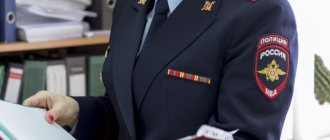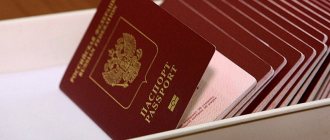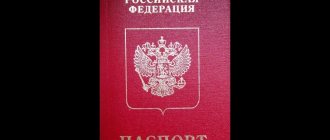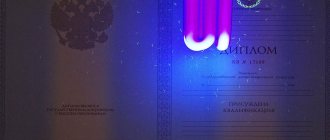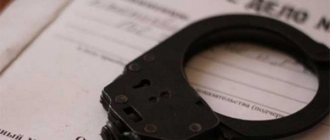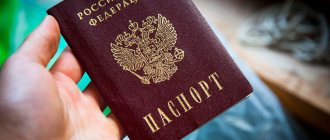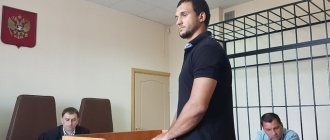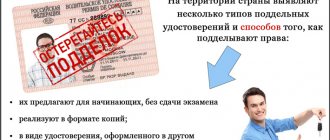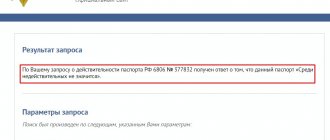How to check the authenticity of a passport: methods, step-by-step description and recommendations
The main document of every citizen is an internal passport. Of course, there are many other papers, without which it is almost impossible to confirm your ability to drive a vehicle, level of education, certain skills and abilities, ownership of property, and so on. But still, throughout life, the main thing remains a passport or, at an earlier age, a birth certificate.
Such importance of the document leads to numerous cases of forgery. You can buy a fake passport from an ad on the Internet for only 35 thousand rubles. Such massive activity of criminals who produce “linden” contributes to the emergence of problems not only for the state as a whole, but also for individual citizens in particular. How to check the authenticity of a Russian passport?
Current system
Modern passports eliminate manual writing of data and have film protection for the sheets. It is almost impossible to change the photo or make changes to the data.
An important fact is the presence of instant communication between passport offices, allowing not only the transfer of text messages, but the photographs themselves.
However, the substitution of one person for another still takes place. From one photograph taken at the age of 45, it is difficult to determine the identity of a person aged 60 or more. The external similarity of close relatives (brothers, sisters) also sometimes plays a role. So it is impossible to guarantee that a modern passport is a document that cannot be falsified or used by someone else.
Third page falsification
According to statistics from law enforcement agencies, recently there has been an increase in the number of falsifications of passports of residents of our country. Usually the third page of the document with the owner’s photograph and key data, as well as various registration stamps, are forged. But how to check the authenticity of a Russian citizen’s passport?
There are a number of ways to falsify:
- Splitting the laminate, replacing an existing photograph with another and secondary lamination.
- Deleting a photo and pasting another photo in its place.
- Attaching a new sheet of paper with fake details, another photograph to the third page of the passport and secondary lamination.
- Elimination of the original data, application of falsified impressions of the form, photographs, installation information to the sheet and covering with another laminate.
- Sectioning the passport, taking out the existing sheet and sewing in another with forged materials and a different photograph.
However, other pages of the passport may also be falsified. It all depends on the task assigned to the attacker.
Passport verification method
How to check the authenticity of a Russian citizen's passport? This is a technically complex document made using sophisticated, cutting-edge techniques. On the one hand, this contributes to a certain protection of the document, but, on the other hand, it does not allow, especially inexperienced people, to quickly detect a fake. As a result, the study of this document develops into a whole process with specific skills and techniques. As a rule, in the course of identifying fakes, there are three main stages:
- Examination of document accuracy.
- Determining the ownership of the passport by the person who provided it to the official.
- Identifying signs of document falsification.
First stage of verification
At this stage, the authenticity of the passport is verified by determining the legal capabilities of the document and checking that the passport matches the established form. After this, all details (mandatory data contained in the document), the presence of all seals and stamps, and their contents are clarified.
It is imperative to check the validity period of the passport and signature. If one of the essential details is missing, the passport loses its legal capabilities.
When externally studying passport data, one must focus on the correspondence of the holder’s date of birth with the timing of the document’s issuance and the type of passport. In fakes, the time frames may not correspond to each other. The period for issuing the document must depend to a certain extent on the year of birth of its owner.
You also need to ensure that the data from the region in which the document was issued corresponds with the stamp on the registration of the Russian at the place of residence at the time of receipt of the passport. The approximate age of the person shown in the photograph must correspond to that indicated in the passport.
If differences arise, it is recommended to compare the document data with information in other official documents.
How to distinguish mastopathy from breast cancer?
Author of the question: Belousov K. Created: 12/15/21
Mastopathy
is a harbinger
of cancer
.
This condition of the female breast
is quite normal and is not a disease.
distinguish
mastopathy
from
cancerous
tumors yourself - all symptoms (
breast
, lumps, nipple discharge) appear temporarily before menstruation and disappear after it.
Answered by: Alekseeva B. 12/18/21
Second stage of authentication
External examination of the passport allows only partially determining the authenticity of the document. Therefore, it is imperative to continue working with the presented papers. At the second stage, the owner of the passport is determined by comparing the image in the photograph with the person who provided it. You should also compare photographs and biographical materials across multiple documents.
Third stage of verification
At the third stage, passport authentication is slower. It is necessary to conduct a thorough analysis of the passport with the task of identifying details that could indicate a possible forgery of the document.
Signs of currently observed counterfeits can be established by studying the page of a document against the light, in oblique lighting, using magnifying mechanisms, as well as studying forms in ultraviolet rays to detect document security elements. You can use the compact autonomous mechanism “Ultramag-AZb” from the “Vildis” campaign (RF).
The verification method is as follows: first, the principle of creating a passport form is determined (it is produced using the printing method and has the required “set” of security details). After this, you need to examine the document in order to detect a possible replacement of the photograph.
Signs of a fake passport
How can you verify the authenticity of a citizen's passport? Work practice allows us to determine the main directions of production of counterfeits. Attackers can create counterfeits that can be identified by the following criteria:
- Falsified display of passport page details. An inkjet printer prints patterns of individual dots in different shades. When printing using the color electrophotography method, the coloring material lies on the surface of the sheet, all drawings and letters are built from small, sintered grains of paint of different colors; the drawings have a grainy structure and a specific shine. Goosebumps are visible on unsealed areas.
- Changing the color of the form.
- No water images.
- Uneven passport page sizes.
- There are no frequently displayed words “Ministry of Internal Affairs of Russia” glowing red under ultraviolet light.
- On the passport form there is no word “RUSSIA”, which glows green in ultraviolet light.
- There are no fibers on the document form that glow in yellow and green tones in ultraviolet light.
- There are no microtexts that fill the lines of the third page.
- Uneven color shade of the numbers used to write the series and document number on the pages of the document.
- In a number of cases, poor-quality printing of details on the pages of the passport.
- Presence of defects on the laminate.
- Earth and other foreign impurities were found underneath.
- Laminate splitting.
- Detection of signs of its cut in the upper part of the form.
- Presence of signs of damage to the laminate around the photograph.
- Discovering another one under the photo.
- Double laminate available.
- Folds on individual endpapers and passport cover.
AGB ~ Guarantee Agency
Methodology for checking a Russian passport - independently To the list of orders
Check your passport See also: Check your passport
First of all, it is necessary to conduct a check using the service provided by the Main Directorate for Migration Issues of the Russian Ministry of Internal Affairs.
But you need to understand that this is only the first step on a very difficult path. Of course, if you receive a response that the passport is “Not valid”, then this can be very useful for further assessing the situation. However, here too it is necessary to allow for base errors. Does this give the correct answer? Pay attention to the phrase located on the page of this service: “We are improving the service with the help of citizens. Information in AS “Russian Passport” has been corrected: 1993285 (as of September 3, 2020) This means that this is exactly the number of citizens who applied to correct errors in the database. However, it can be assumed that even more citizens simply have not yet encountered such an error in their data. At the same time, in three years there has been an increase of more than 2 times! So, on March 5, 2021, there was an entry “Adjusted information: 800772.”
But most often we receive the answer: “It is not among the invalid ones.” Does this answer indicate that a passport was issued? Probably, with common sense, we can only say that a passport with such a series and number is not included in the list of invalid ones! Thus, it would be too reckless to check someone using this database and calm down.
Threats
But how do you know if it was really issued? And to whom? Have you verified your full name, date and place of birth, and other data?
A passport itself is a fairly well-protected document from forgery, so passports are rarely forged “from scratch,” and attackers limit themselves to partially changing real passports.
METHODOLOGICAL RECOMMENDATIONS for identifying signs of falsification of a passport of a citizen of the Russian Federation
An analysis of expert practice shows that in recent years there has been an increase in counterfeit passports of citizens of the Russian Federation. As a rule, the third page of the passport with the owner’s photo card and installation data, as well as registration stamps, is subject to forgery.
Forgery of the third page of a passport is currently carried out in several ways.
- Peeling the laminate, replacing the existing photo card with a new photo card and re-laminating.
- Cutting out the photo card and gluing a new one with a new laminate in its place.
- Gluing onto the third page of the passport (on top of the laminate, photo card and installation data) a sheet of paper with simulated details, photo cards and lamination with a new laminate.
- Removing the laminate, photo card and the surface layer of paper with installation data, applying simulated images of the form, photo card, installation data to the paper and laminating with a new laminate.
- “Unstitching” the passport, removing the existing sheet and “sewing in” a new sheet with simulated details of the form, installation data, photo card and laminate.
Examination of the passport should be carried out in three stages: Check the passport
- Checking the validity of a document
- Establishing its ownership by the bearer
- Identifying signs of document forgery
At the first stage, the legal force of the document and the compliance of the passport form with the approved and valid form are established. Then all details (mandatory information contained in the document), the presence of seals and stamps, and their content are checked.
When logically studying the contents of a passport, it is necessary to pay attention to the correspondence of the date of birth with the dates of issue of the document and the issue of the sample passport. In fake documents, these dates may contradict each other. The date of issue of the passport must correspond to the age of its owner.
It is necessary to check the correspondence of the record about the region in which the passport was issued with the stamp of registration of the citizen at the place of residence at that time.
The approximate age of the person depicted on the photo card must correspond to that indicated in the document.
If there are any doubts about the authenticity of the document presented, it is advisable to compare the entries in the passport with the data in the birth certificate, military ID or other document.
At the second stage, the identity of the document is verified by the bearer by comparing the image on the photographic card with the citizen’s appearance. It is preferable to compare photographic cards, last name, first name, patronymic and other information in different documents.
At the third stage, a thorough examination of the passport is carried out in order to identify signs that could indicate its possible forgery.
Signs of currently occurring passport forgeries can be detected by examining the third page of the passport against the light, in oblique lighting, using magnifying devices (loupes, microscopes), as well as examining the document in ultraviolet light, to identify the security elements of the passport and the method of its manufacture, it seems It is advisable to use a portable autonomous device “Ultramag-AZb” (Russia). Initially, the method of producing the passport page is established (it must be produced by printing and have the necessary “set” of security elements), and then the document is studied in order to identify a possible replacement for the photo card.
Having analyzed all the currently encountered methods of falsifying a passport of a citizen of the Russian Federation, we have selected signs that can be identified when examining a passport in the departments of the passport and visa service, the presence of at least one of which may indicate either a complete or partial forgery of the third passport pages.
Thus, if the third page of a passport is falsified, the following signs may be detected:
- simulated images of the form details (inkjet printing - the images consist of individual dots of black, cyan, magenta and yellow, sometimes the dots can have the same color, the dots have approximately equal sizes; using color electrophotography - the coloring matter is on the surface of the paper, all images consist of small, sintered grains of coloring matter of black, blue, purple and yellow colors, the images have a granular structure and a specific shine, there are dots on unprinted areas);
- difference in color of the third page of the passport from other pages of the document;
- absence of watermarks (with complete replacement of the sheet);
- different size of the third page compared to other pages of the document;
- the absence on the page of the passport and on the photo card of the repeatedly repeated text “Ministry of Internal Affairs of Russia”, which fluoresces in red in ultraviolet rays;
- the absence of the word “RUSSIA” on the passport form, which fluoresces green in ultraviolet rays;
- the absence on the passport form of fibers that fluoresce in ultraviolet rays in yellow and green;
- lack of microtexts on the lines of the third page;
- different shades of the coloring matter of the numbers used to make
- series and document number on the third page and on other pages of the passport;
- in some cases, poor quality reproduction of the details of the third page form;
- the presence of “bumps” on the laminate, numerous folds, dullness of the laminate;
- presence of dirt, foreign fibers, etc. under the laminate;
- peeling of the laminate from the page;
- the presence of traces of a laminate cut at the top of the page; — presence of traces of a cut in the laminate around the photo card;
- the presence of another photo card under the photo;
- the presence of two laminates;
- difference in the shade of the coloring matter and the design of part of the ornament;
- available on the photo card, located on the form;
- folds on one of the endpapers and cover of the document.
Since 2006, a protective “diving” metallized thread has been introduced into the paper on the nineteenth and twentieth pages, changing color depending on the viewing angle; individual sections of the thread are visible on the surface of the nineteenth page.
As noted above, stamps indicating registration or deregistration are also subject to forgery.
The official seal of the authority that issued the documents can be falsified only if the attackers, for some reason, have a blank document form at their disposal.
Previously, impressions of identification printed forms (seals and stamps) were forged quite primitively and could be detected by a non-specialist.
However, at present, attackers use the same technologies to forge seals and stamps that are used in the production of genuine identification printed forms. For this reason, it is extremely difficult to identify such a fake without special knowledge and samples for comparison. In this regard, we will not dwell on this problem in detail in these methodological recommendations, but will indicate only the most characteristic signs of counterfeit printed identification forms that a passport and visa service employee can pay attention to:
- spelling and semantic errors;
- mirror image of the coat of arms;
- signs of inkjet printing and electrophotography (indicated above when
- passport description);
- simplified drawing of signs;
- different graphic designs and sizes of signs of the same name;
- absence of individual parts of signs;
- uneven placement of text, unequal distances between
- signs;
- angular structure of oval elements;
- rounding the ends of strokes and angular elements;
- displacement of signs;
- violation of parallelism and radiality of lines;
- fractures, tortuosity of strokes;
- uneven coloring of sign elements;
- continuous display of elements located close to each other;
- the presence of extraneous fragments of strokes and dots on whitespace elements;
- duality of sign elements.
In cases of any doubt about the authenticity of the passport and difficulties in assessing the identified signs, it is advisable to contact specialists of the forensic service of the internal affairs bodies or employees of the territorial divisions of the Federal Migration Service of Russia.
Check passport
Changes in recent years
Since 2006, verifying the authenticity of a passport has become, in some ways, easier. The paper of the nineteenth and twentieth pages includes a protective “diving” metallized thread, which changes its shade depending on the change in the radius of vision. Individual pieces of thread appear on the surface of the nineteenth page.
As mentioned above, stamps on registration or deregistration are also subject to falsification.
The image of the official seal of the institution that issued the passport can be falsified only if the attackers have a blank passport.
New problems
In the twentieth century, passport stamps were falsified quite primitively and could be detected quite easily. But now it has become more difficult to verify the authenticity of a passport. Attackers use the same technologies to falsify prints that are used to create genuine documents. Therefore, it is very difficult to detect such a fake without professional skills and knowledge. However, the most characteristic symptoms of falsified identification printed forms, which a passport and visa service employee may focus on, need to be considered.
Save as PDF
The most acceptable format for saving photos or scans of a passport is PDF. To save in PDF format: Option 1. 1. Go to the website https://smallpdf.com/ru 2. Select “Word to PDF”, following the instructions, save the document in PDF format..
Option 2. 1. Use the PDF printer cutepdf.com, select CutePDF Writer from the proposed list - install it on your computer. After installing the program, in the Microsoft Word editor, select File>Print>From the printer selection, select CutePDF Writer, and click PRINT..
For all your subsequent purchases, we will save the PDF file, making purchases more convenient and faster.
>
Attacker mistakes
Possible errors that can help identify a fake:
- errors in words, seals, numbers;
- mirror image of the coat of arms;
- signs of inkjet printing and electrophotography;
- primitive drawing of signs;
- unequal graphic design and volume of characters of the same name;
- some parts of the signs are missing;
- heterogeneous placement of words, different distances between words and numbers;
- angular structure of oval letters and numbers;
- rounding the ends of strokes and angular elements;
- displacement of letters and numbers;
- distortion of parallelism and radiality of lines;
- unequal shades of sign elements;
- a merged image of elements standing next to each other;
- the presence of foreign elements, strokes and dots on whitespace elements;
- duality of elements of letters and numbers.
Signs of documents that are printed from a photo-zincographic plate:
- § squeezing the strokes of text and drawing into the pressure and thickening the layer of paint along the edges of the strokes;
- § deviation of the print size from the original due to non-compliance with the shooting scale when photographing;
- § deviation in the thickness of strokes of text and drawing in a printed copy caused by the conditions of photography, processing of photographic materials, digestion during the production of cliches and printing;
- § insufficient clarity of small strokes and details, uneven edges and breaks in strokes “eaten” by acid, roundness of corners indicated by two strokes (due to “etching” by acid during the production of cliches).
Help
Where can I check the authenticity of my passport? If there are doubts about the authenticity of a document and difficulties in assessing the existing signs, it is advisable to ask questions to specialists of the expert forensic service of the internal affairs bodies. How to check the authenticity of a passport at the Federal Migration Service of Russia? It is enough to contact service specialists with a probably fake document or check the document on the official website.
How to distinguish a fraudster from a bank employee over the phone?
Author of the question: Belova K. Created: 12/02/21
You can distinguish a real bank employee from a fraudster by key phrases in a telephone conversation - an offer to provide confidential data or transfer money to another account. Leading expert in the field of “Information Security” IT-Evgeniy Druzhinin told RIA Novosti about this. According to him, any call related to a bank account should be treated with caution. The bank's security service, as a rule, acts preventively, Druzhinin explained: the transaction is immediately blocked, and notification about this
Answered by: Nazarov N. 03.12.21
Verification method through the official website
You can check the authenticity of your passport at the FMS. How to do this without leaving home? You need to go to the official website of the Federal Migration Service of the Russian Federation. At the top of the page there are links to individual sections. You need to opt for the “Document Verification” office.
Next, a page will open for examining official papers with several links. You must select “Checking the validity of a passport of a citizen of the Russian Federation” and click on the link. In the form you can check the authenticity of your passport by number. A form to fill out will appear on the right side of the screen. In the fields marked with an asterisk, you must carefully and correctly write the passport details of the person being checked. The first field contains the passport series, without spaces. In the second field you need to write the six-digit document number. To avoid errors and facilitate the operation of the computer system, it is advisable to indicate the time of issue of the passport.
Terms and price
The issuance of a new document is not free of charge; the interested party must pay a state fee. This requirement is regulated by the provisions of Article 333.33 of the current Tax Code of the Russian Federation.
For the initial receipt or replacement of the main document, a state payment of 300 rubles is provided.
Section 333.33. Amounts of state duty for state registration, as well as for performing other legally significant actions
A similar amount is determined if the applicant is a resident of a foreign state, but plans to obtain a passport of the Russian Federation. The most significant penalty is levied upon rendering a document unusable due to negligence - 1,500 rubles.

